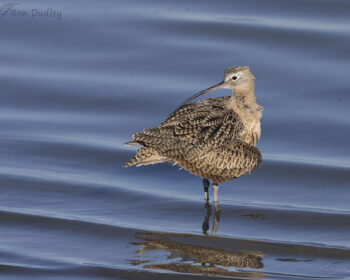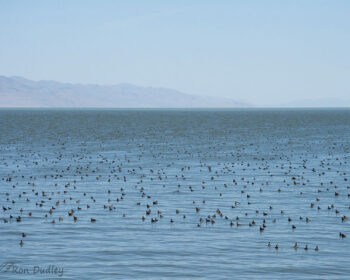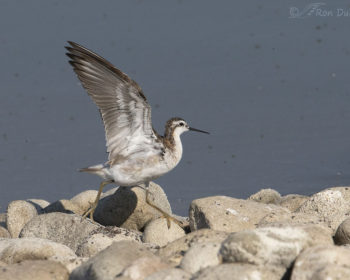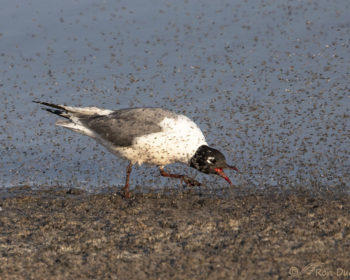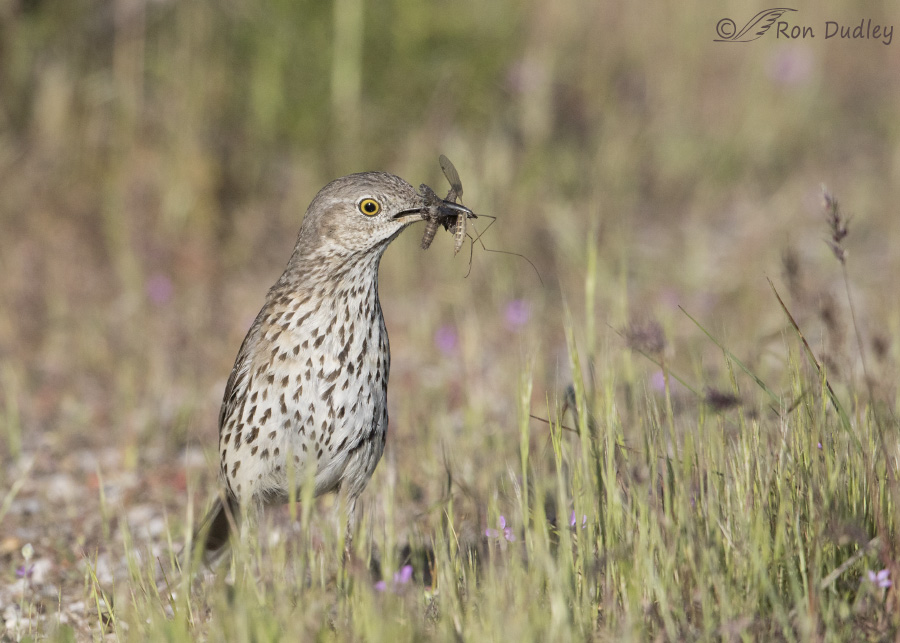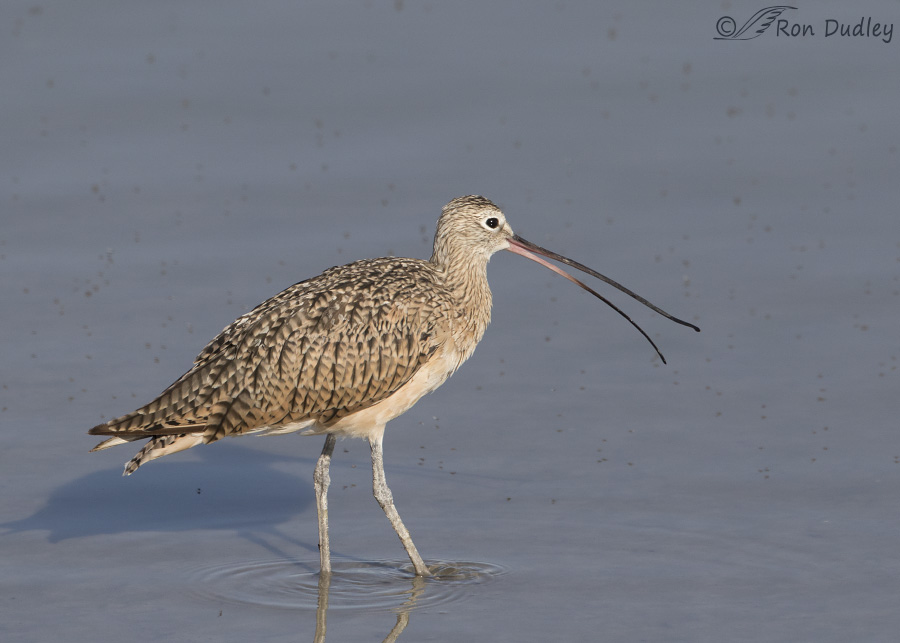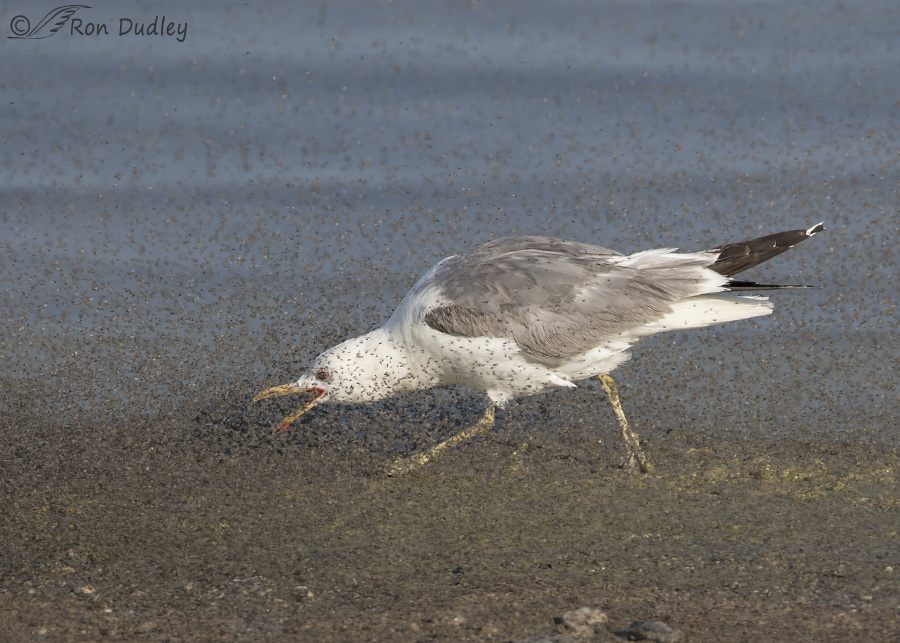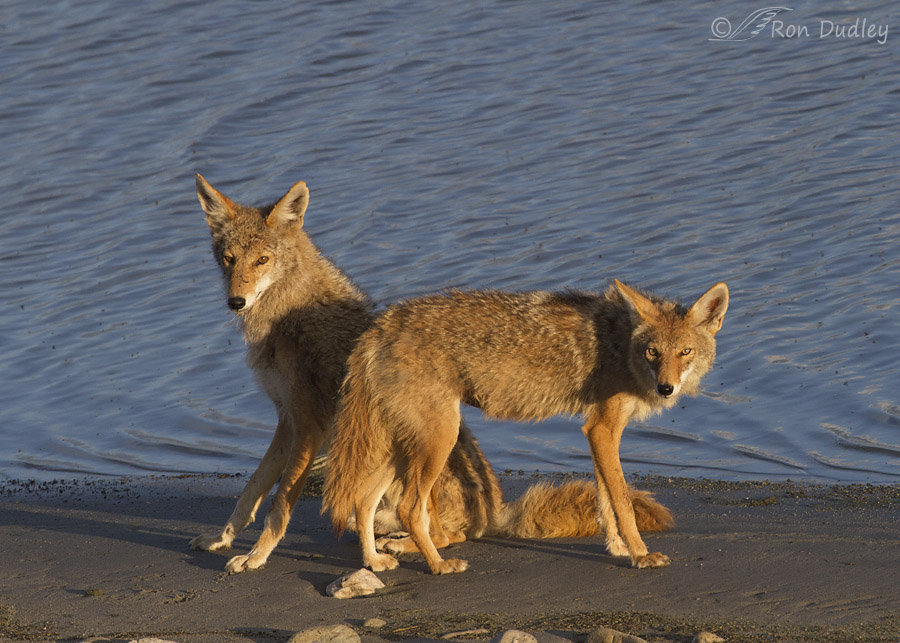Tag: brine flies
A Video Eulogy For A Salty Old Friend
Wilson’s Phalaropes Along The Antelope Island Causeway
The Antelope Island Brine Fly Feeding Frenzy Is In Full Swing
Sage Thrashers Hunting Bugs On Antelope Island (and the misery of biting gnats)
Long-billed Curlew Performing Rhynchokinesis
Gulls, Brine Flies, Spiders And Robert Kirby
Coyote Buddies – Both Of Them Survivors
Long-billed Curlew And Fledgling
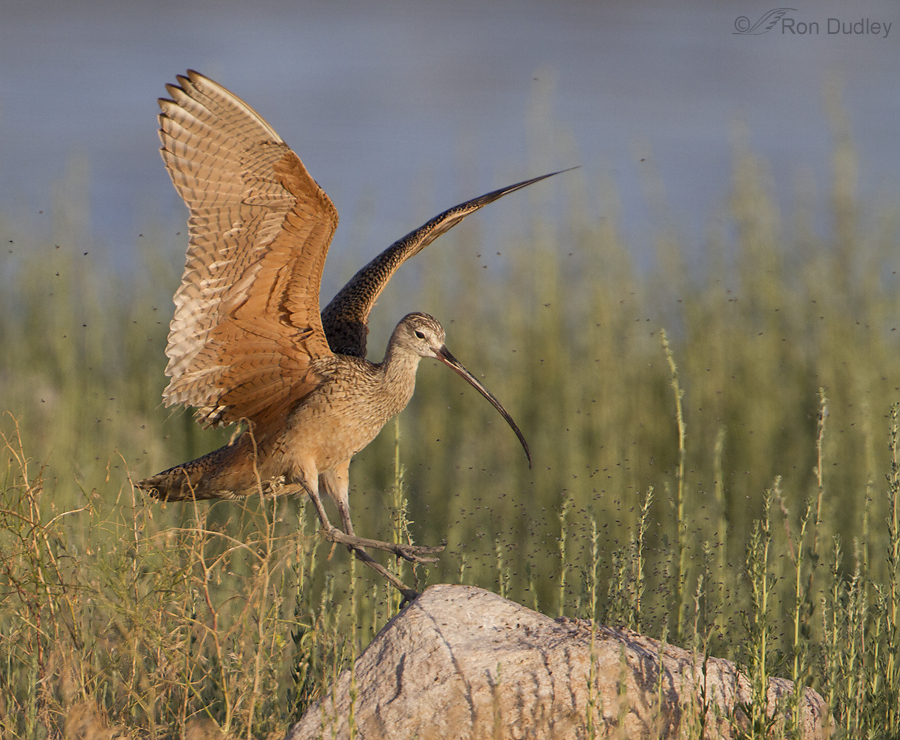
Long-billed Curlews spend most of the late spring and early summer at mid-elevations on Antelope Island while nesting and raising their chicks but by this time of year they begin to bring the youngsters down to the shoreline. That’s where I photographed this lone adult with a single youngster yesterday morning.
Great Salt Lake Chukar
I often enjoy elements of incongruity in my images, particularly birds in unexpected settings. Chukars prefer steep, rocky, mountainous and dry terrain so in my experience with them it is atypical to catch them in a photograph with a body of water in the background. When it’s hot, as it is now, these birds drink large amounts of water but of course the Great Salt Lake is much too saline for them to drink from. So they spend nearly all their time higher up on the rocky slopes and drink from the fresh water springs in the area. 1/1600, f/7.1, ISO 400, 500 f/4, 1.4 tc However, there is one thing that draws them to the shore of the lake this time of year – brine flies. Chukars are almost exclusively vegetarians and eat mostly leaves and seeds although they’ll consume insects “occasionally”. But apparently they can’t resist the bounty of hordes of brine flies found along the shore of the lake during July and August (I’ve posted a shot here of a Chukar gorging on these flies) . I found this bird and several others along the shoreline yesterday. While I didn’t actually observe them consuming flies this time I’m confident that it was the flies that attracted them to the shore. Ron
Some Recent Shots I Like, Despite Some Flaws
Like every other bird photographer many of the photos I take are not worth keeping. For the first few years I was shooting birds I estimated that I deleted 90% of my images. Now that I’ve become a little more discriminating that number is probably closer to 95%. Birds are incredibly difficult subjects – they’re fast, unpredictable, difficult to approach and generally uncooperative. When I’m culling images after a day in the field most shots fall under two main categories – keepers and garbage. But there’s often a few that are technically lacking for one reason or another but have some unusual or especially interesting feature that makes it difficult for me to trash them. So I don’t. Occasionally I go back through them just for the fun of it. I enjoy them and thought some of you might too so here’s a few from the past month or so. 1/2500, f/7.1, ISO 500 500 f/4, 1.4 tc This one’s from yesterday – a Lark Sparrow that posed and groomed for us for quite a while. Looking through the viewfinder I had no idea there was a second Lark Sparrow in the vicinity and didn’t even notice it flying through the frame until I got home and looked at it on my computer. Mia said that she’d noticed the second bird and that it chased the first bird away when it flew. Anyway, I thought the out-of-focus sparrow to the left was an interesting serendipity. I just wish the two twigs by the head weren’t there. 1/2500, f/7.1, ISO 500 500 f/4, 1.4…
Eared Grebes In Utah
Eared Grebes are the most abundant grebe on the planet and immediately after the breeding season most of the population on this continent migrates to either Mono Lake, California or the Great Salt Lake in my back yard where they feed on brine shrimp and brine flies. 1/800, f/7.1, ISO 500, 500 f/4, 1.4 tc Most of the grebes that I see are on the Great Salt Lake where it’s difficult to get quite close enough to them for photography purposes but occasionally I’ve seen them on smaller ponds where they’re attracted by insect hatches. 1/400, f/8, ISO 500, 500 f/4, 1.4 tc The eye of this species is incredibly red, almost unbelievably so. Just to be clear, I’ve not applied any saturation to these photos. 1/800, f/7.1, ISO 500, 500 f/4, 1.4 tc These birds are tireless feeders and divers. In scientific studies it’s estimated that they consume between 8,000 and 70,000 brine shrimp per day. That’s a lot of diving! 1/1600, f/8, ISO 500, 400 f/4, 1.4 tc When there’s an insect hatch they feed on the surface and as they scurry from bug to bug they’re very difficult to follow because of their quick turns and amazing swimming speed – it can be almost as challenging for the photographer as photographing small birds in flight. Here the grebe has spotted a floating midge on the left… 1/1600, f/8, ISO 400, 500 f/4, 1.4 tc approaches the midge very quickly… 1/1600, f/8, ISO 400, 500 f/4, 1.4…
A Video Eulogy For A Salty Old Friend
Wilson’s Phalaropes Along The Antelope Island Causeway
The Antelope Island Brine Fly Feeding Frenzy Is In Full Swing
Sage Thrashers Hunting Bugs On Antelope Island (and the misery of biting gnats)
Long-billed Curlew Performing Rhynchokinesis
Gulls, Brine Flies, Spiders And Robert Kirby
Coyote Buddies – Both Of Them Survivors
Long-billed Curlew And Fledgling

Long-billed Curlews spend most of the late spring and early summer at mid-elevations on Antelope Island while nesting and raising their chicks but by this time of year they begin to bring the youngsters down to the shoreline. That’s where I photographed this lone adult with a single youngster yesterday morning.
Great Salt Lake Chukar
I often enjoy elements of incongruity in my images, particularly birds in unexpected settings. Chukars prefer steep, rocky, mountainous and dry terrain so in my experience with them it is atypical to catch them in a photograph with a body of water in the background. When it’s hot, as it is now, these birds drink large amounts of water but of course the Great Salt Lake is much too saline for them to drink from. So they spend nearly all their time higher up on the rocky slopes and drink from the fresh water springs in the area. 1/1600, f/7.1, ISO 400, 500 f/4, 1.4 tc However, there is one thing that draws them to the shore of the lake this time of year – brine flies. Chukars are almost exclusively vegetarians and eat mostly leaves and seeds although they’ll consume insects “occasionally”. But apparently they can’t resist the bounty of hordes of brine flies found along the shore of the lake during July and August (I’ve posted a shot here of a Chukar gorging on these flies) . I found this bird and several others along the shoreline yesterday. While I didn’t actually observe them consuming flies this time I’m confident that it was the flies that attracted them to the shore. Ron
Some Recent Shots I Like, Despite Some Flaws
Like every other bird photographer many of the photos I take are not worth keeping. For the first few years I was shooting birds I estimated that I deleted 90% of my images. Now that I’ve become a little more discriminating that number is probably closer to 95%. Birds are incredibly difficult subjects – they’re fast, unpredictable, difficult to approach and generally uncooperative. When I’m culling images after a day in the field most shots fall under two main categories – keepers and garbage. But there’s often a few that are technically lacking for one reason or another but have some unusual or especially interesting feature that makes it difficult for me to trash them. So I don’t. Occasionally I go back through them just for the fun of it. I enjoy them and thought some of you might too so here’s a few from the past month or so. 1/2500, f/7.1, ISO 500 500 f/4, 1.4 tc This one’s from yesterday – a Lark Sparrow that posed and groomed for us for quite a while. Looking through the viewfinder I had no idea there was a second Lark Sparrow in the vicinity and didn’t even notice it flying through the frame until I got home and looked at it on my computer. Mia said that she’d noticed the second bird and that it chased the first bird away when it flew. Anyway, I thought the out-of-focus sparrow to the left was an interesting serendipity. I just wish the two twigs by the head weren’t there. 1/2500, f/7.1, ISO 500 500 f/4, 1.4…
Eared Grebes In Utah
Eared Grebes are the most abundant grebe on the planet and immediately after the breeding season most of the population on this continent migrates to either Mono Lake, California or the Great Salt Lake in my back yard where they feed on brine shrimp and brine flies. 1/800, f/7.1, ISO 500, 500 f/4, 1.4 tc Most of the grebes that I see are on the Great Salt Lake where it’s difficult to get quite close enough to them for photography purposes but occasionally I’ve seen them on smaller ponds where they’re attracted by insect hatches. 1/400, f/8, ISO 500, 500 f/4, 1.4 tc The eye of this species is incredibly red, almost unbelievably so. Just to be clear, I’ve not applied any saturation to these photos. 1/800, f/7.1, ISO 500, 500 f/4, 1.4 tc These birds are tireless feeders and divers. In scientific studies it’s estimated that they consume between 8,000 and 70,000 brine shrimp per day. That’s a lot of diving! 1/1600, f/8, ISO 500, 400 f/4, 1.4 tc When there’s an insect hatch they feed on the surface and as they scurry from bug to bug they’re very difficult to follow because of their quick turns and amazing swimming speed – it can be almost as challenging for the photographer as photographing small birds in flight. Here the grebe has spotted a floating midge on the left… 1/1600, f/8, ISO 400, 500 f/4, 1.4 tc approaches the midge very quickly… 1/1600, f/8, ISO 400, 500 f/4, 1.4…


